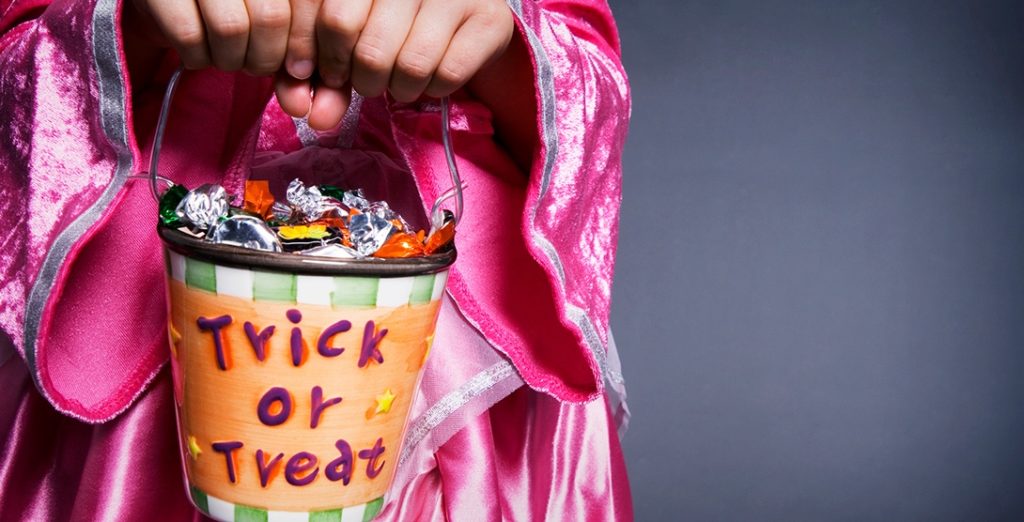Healthy trick or treating: how to limit Halloween candy and other tips
It is impractical—and unnecessary—to completely eliminate candy this Halloween. Experts say moderation is the key. But do you know how to limit Halloween candy in our super-sized culture?

Here are some tips for healthy trick or treating, whether you’re handing out Halloween candy at home or escorting your kids around the neighborhood.
At your home: portion size and candy alternatives
Don’t give out supersize portions. A fun size or snack size candy paired with a healthier treat or toy is better than handfuls of candy.
Include healthier treats. Snack size pretzels, popcorn, trail mix, pre-packaged carrot sticks or apple slices, clementines, mini boxes of raisins, or granola bars—to name a few.
Consider small, inexpensive toys. Glow sticks, bouncy balls, crayons, coloring books or small notebooks, stickers, stamps, bubbles, plastic rings, toy animals or dinosaurs for imaginative play. These gifts are healthier for all children and may be best for children with food allergies. A teal pumpkin on your door can signal families that you have non-food items available.
Before you go trick-or-treating: prepare your kids
Eat a healthy dinner. Don’t let kids go trick or treating on an empty stomach. They will eat less Halloween candy if they fill up on proteins, fruits, veggies and whole grains before they head out.
Choose the right bag. Kids can haul as much candy as their trick or treat bag allows, so leave the pillowcase at home. Choose a small bucket or bag instead.

After the haul: limit Halloween candy
Sort and downsize. Involve children in sorting the candy into “keep” and “donate” piles, encouraging kids to share their bounty with others. Keep enough for each child in your home to have one piece of candy a day for 1-2 weeks. Donate or repurpose the rest. Dentist offices, homeless shelters, and organizations that send candy to troops overseas will often accept candy donations. Some will even buy your candy.
- Exchange candy for cash at these Indianapolis locations compiled by Indy’s Child.
- This list from Indy with Kids includes areas outside of Indianapolis.
Create your own “buy back” program. Allow children to give their candy back to you in exchange for fun physical activities like a day at the zoo, an afternoon playing at the park, ice skating, family bike ride, etc. Pair treats with healthy options. When your child eats a piece of candy, serve it alongside a healthy snack: an apple, banana, nuts, or celery with peanut butter.
Tips adapted from American Heart Association and Nationwide Children’s Hospital.
Halloween party ideas
There’s nothing scary about these healthy Halloween party ideas! Read our tips for what to serve and do at your Halloween party.
More on healthy celebrations
Healthy celebrations can take place any time of year, anywhere kids gather—home, school, daycare, or after-school program. Our guide “Healthy Students Achieve More”includes more tips and resources for classroom parties as well as lunch and breakfast programs.

Topics: Healthy Celebrations, Healthy Eating
Subscribe for more
Want more ideas for healthy schools, workplaces, child care providers, and families? Subscribe to our blog for weekly tips delivered right to your inbox!
Nothing scary about these healthy Halloween ideas NEXT »
School recess is critical to student learning, school wellness
